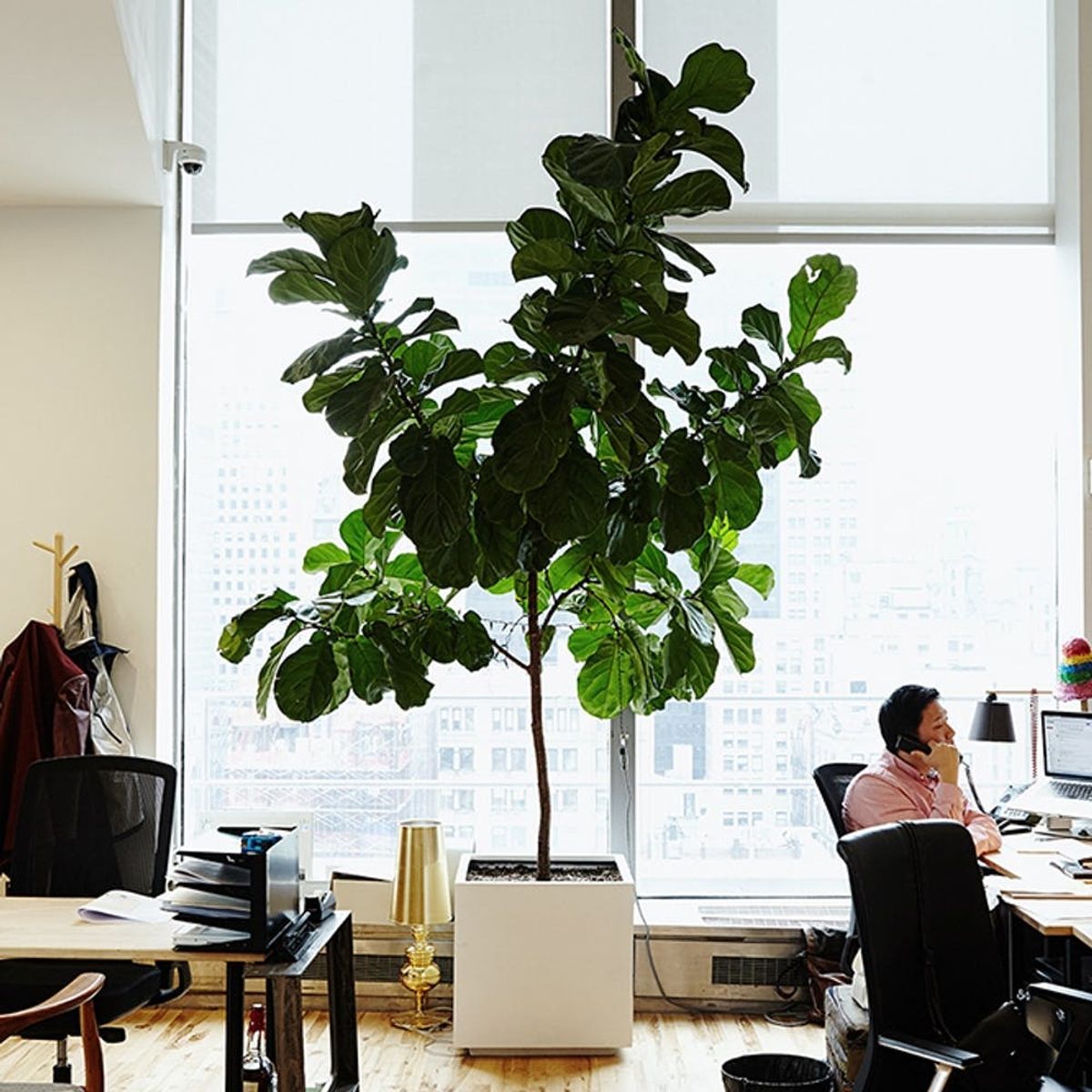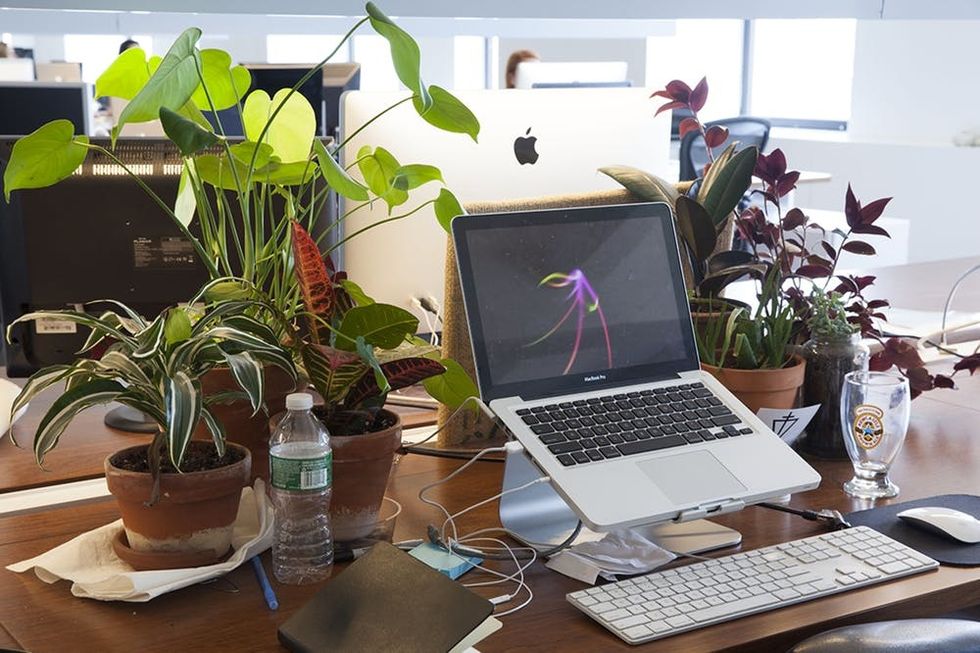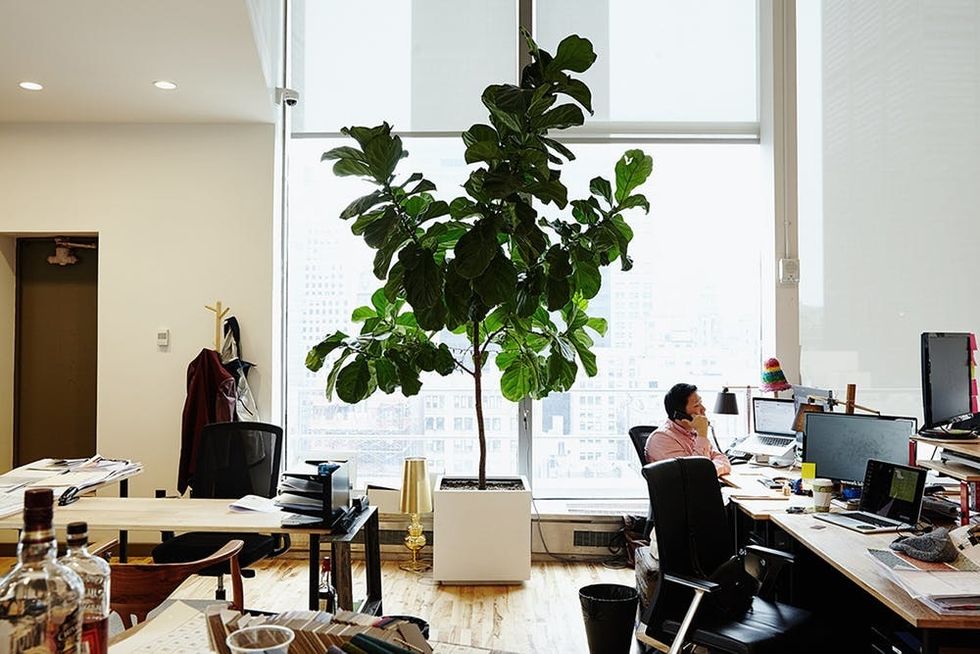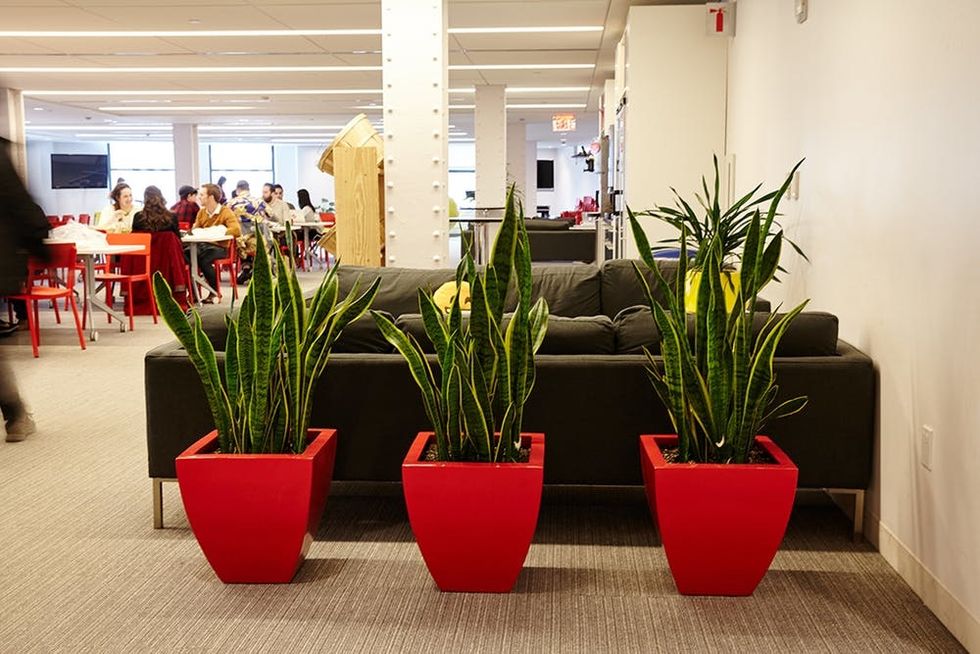Green your space.
5 Indoor Plants With Air-Purifying Benefits


The Sill’s mission is to empower all people to be plant people. So we’re kicking off a new series committed to growing your green thumb. Follow along in the months of April and May for all the gardening tips, hacks, and inspo you need. Happy planting!
Indoor plants don’t just look good – they make us feel good mentally and physically, too. Studies have shown indoor plants can:
- Boost morale, productivity, concentration, and creativity
- Reduce stress, fatigue, sore throats, and colds
- Improve indoor air quality by absorbing toxins, increasing humidity, and producing oxygen
- Improve offices by softening sterile interiors, dividing areas, and reducing noise levels
- Be pleasing to look at and therapeutic to care for

Have you heard of Sick Building Syndrome? The term is used to describe symptoms experienced by those of us working or living in large commercial buildings when no other cause can be found for their illness. Symptoms can include sudden allergies; irritation of the eyes, nose, and throat; headache, dizziness, and fatigue; respiratory and sinus congestion; and even nervous system disorders.
What’s the cause of the majority of these symptoms? Indoor air pollution. Not great news when the Environmental Protection Agency estimates Americans spend approximately 90 percent of their time indoors. Indoor air pollution is generally a consequence of toxic emissions like benzene, formaldehyde, trichloroethylene, xylene, and toluene from synthetic building materials, or airborne mold, viruses, and pollutants, along with energy-efficient construction techniques like making spaces as airtight as possible, which reduces the circulation of air.
Improving your indoor air quality in the home and office can pay off even if you don’t have any noticeable symptoms. And one of the best ways to do that is with indoor plants. Plants absorb these harmful toxins, break them down into gentle organic byproducts, and store them in their soil to use later for food.

Not only can the presence of indoor plants lead to a decrease in Sick Building Syndrome symptoms, but studies have shown that, where indoor plants have been installed, office work performance increased, staff well-being improved, and sick-leave absences were reduced.
Contact with nature in general has been shown to reduce mental fatigue and stress and increase relaxation and self-esteem. Even brief exposure to nature has been shown to make us more altruistic and cooperative. In a 2013 study, touching real foliage – rather than fake foliage made from resin – was shown to elicit an unconscious calming effect on participants.

OUR favorite air-purifying plants:
1. Snake Plant
This no-fuss tropical plant has thin, upright leaves with irregular banding that resembles the skin of a reptile. Its adaptations for surviving drought make it a suitable plant choice for anyone, anywhere. Snake plants have been shown to filter benzene, formaldehyde, trichloroethylene, xylene, and toluene.

2. Pothos
Nicknamed the “cubicle plant” at our office, the pothos is our go-to for brown-thumbed customers with less than ideal conditions. The pothos’ trailing vines can grow to over 10 feet long! The pothos has been shown to filter benzene, formaldehyde, xylene, and toluene.
3. Rubber Plant
A popular houseplant, this variety of ficus has thick upright stems with glossy, oversized leaves that can store water in case of drought. They prefer bright to moderate indirect light. Rubber plants have been shown to filter formaldehyde.

4. Bird’s Nest Fern
The bird’s nest fern is characterized by ripple-edged fronds that grow out of a nest-like crown. It makes for a lovely hanging plant indoors. They thrive in indirect light and a humid environment. Ferns have been shown to filter formaldehyde, xylene, and toluene.
5. Philodendron
In the right indoor conditions, the philodendron’s heart-shaped leaves and trailing vines can trail to over 10 feet long, making it the perfect plant for a high shelf. Did we mention it has a reputation for being one of the easiest houseplants to grow? Philodendrons have been shown to filter formaldehyde.
Note: NASA recommends one 8” potted plant per every 100 square feet of space (with average ceiling height of 9 feet).
What houseplants are you using in your home this season? Let us know @BritandCo!


















